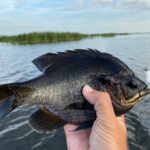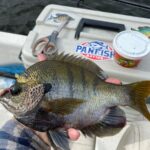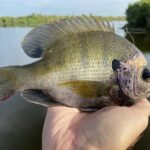Bluegill may appear to be a simple panfish, but believe it or not, these are complex creatures with unique habits that change throughout the year.
In this article, ill go over the best time to catch bluegill, including the seasons (months), and time of day you should focus on.
If you know when to go, and where to look… you’re going to catch more fish. It’s just that simple!
Table of Contents
What Is The Best Time To Catch Bluegill?
By far the best time to target bluegill is in late spring through summer, when bluegill get together to spawn. The precise timing of the bluegill spawning season depends a lot on your location, but for most of North America, the bluegill spawn during the months of April, May, and June.
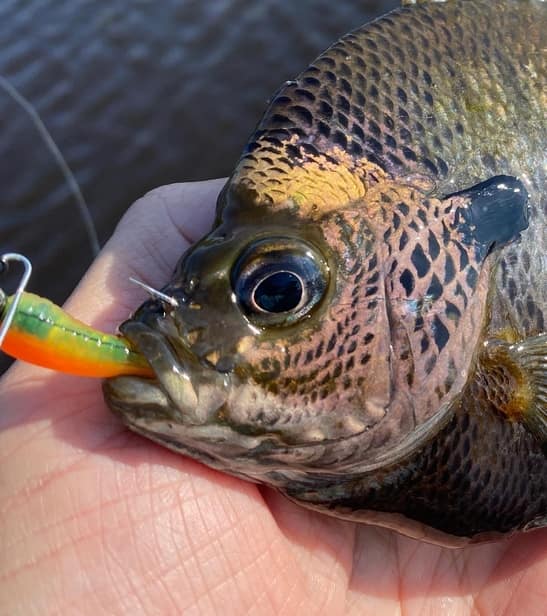
The bluegill spawn comes and goes pretty fast. Fortunately, bluegill can be caught all year round.
They can be caught during the dog days of summer and in the harshest winters. Even if your lake freezes over, you can catch them through the ice, so there’s plenty of panfish action to chase all year round.
What is the Best Time to Fish For Bluegill?
The best time to catch bluegill is during the spawn. Bluegill begin spawning in the late spring and continue through the summer. During this spawning season, bluegill are the easiest to locate and they are the most aggressive. Your chances of catching a giant are also higher this time of year.
During the spawn, bluegill congregate in shallow areas. Just like bass, bluegill make beds and protect their eggs.
Anglers can target bluegill during their spawning season and use bluegill beds to their advantage. Put on some polarized sunglasses, and look for crater-shaped depressions in the shallows; these round depressions are fish nests known as beds.
What Month is the Best to Catch Bluegill?
The best months for bluegill fishing depends a lot on your location. For example, In the southern states, where temperatures are warm year-round, bluegill will spawn earlier and longer than in the northern states.
April, May, and June are considered the best months for bluegill fishing for North America and Canada.
The bluegill spawn is triggered by changes in water temperature. As warmer temperatures arrive in the early spring, bluegill start to move up shallow and feed heavily in the prespawn. Consistent water temps in the mid-60s ℉ will trigger this pre-spawn movement.
As water temps continue to increase through spring and summer, bluegill will start the act of spawning. They will build beds and will defend their territory from any threats to their eggs.
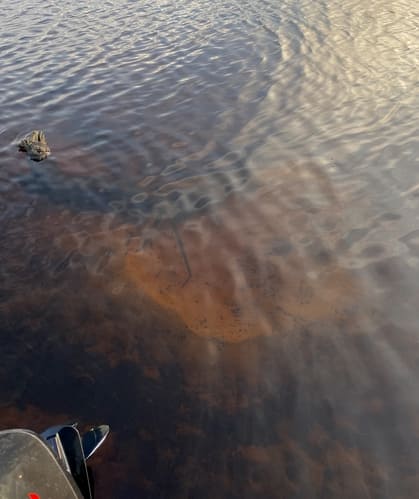
Consistent water temperature between 68 and 75 ℉ are ideal for the bluegill spawning season.
Keep an eye on the weather! If your fish are approaching prespawn, and a big cold front comes through, they will likely push back into the deeper areas until the water temps recover.
The spawning season can vary a lot depending on the habitat type too. For example, in flowing rivers and creeks, the water temperatures are usually slightly cooler than in shallow lakes or ponds, so bluegill tend to bed slightly later here.
You May Also Like: What Is The Best Time Of Year To Catch Crappie?
Can You Catch Bluegill All Year Long?
Yes! Bluegill can be caught all year round. They can be caught during the hottest days in summer, and during the winter, even under the ice. This means there’s no excuse to get out and do some bluegill fishing.
For some parts of the year, you may have to work harder than others, but there are still bluegill to catch. Bluegill move to different areas depending on the season and temperatures. This also varies significantly depending on your regional climate and the type of habitat you’re fishing.
These seasonal effects are most easily observed during harsh winters, where bluegill become extremely slow-moving and picky.
This behavior helps the fish to save energy during the winter, but the fish still need to eat. For those who are brave enough, ice fishing can be incredibly productive for bluegill fishing.
In the deep south, where water temps are quite warm year-round, bluegill are easily accessible in the shallows all year. Even when they aren’t spawning, the shallows are productive feeding areas and bluegills can be caught here consistently.
In the northern states, where seasonal changes are more dramatic, fish often retreat to deeper water during cooler weather or in periods of rapid temperature change.
These deeper areas are more stable than the shallows and bluegill are often more comfortable there during high pressure days.
What is the Best Time of Day to Catch Bluegill?
Bluegill are sight predators, so they are active throughout the daylight hours. The best time of day depends a lot on the weather and temperature, but like most predators, the morning and evening hours are your best bet for productive bluegill fishing.
In the morning and evening, bluegill are more actively feeding, and the action is generally better than in the middle of the day.
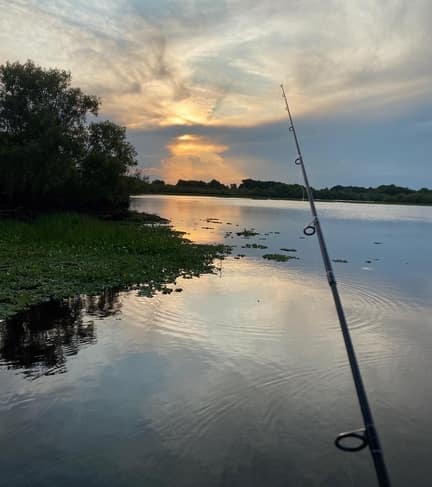
However, if the weather is cold, the bluegill bite might be better in the middle of the day when the water is at its warmest. These weather and season trends are important to pay attention to.
While the action is better in the morning and evening, you can still catch fish all day long if the weather is good. Low-pressure prefrontal days are usually your best bet at some incredible action.
The good news is bluegills aren’t very picky, so even if the weather or time isn’t in your favor, you have a good chance to catch some fish.
See Also: The Top 10 Best Bluegill Lures Of All Time
Can you Catch Bluegill at Night?
Bluegill are diurnal predators. This means they are active during the daylight hours. While you may occasionally catch the odd bluegill during the night, night fishing is not considered nearly as productive as fishing during the day.
If you are interested in catching panfish at night, focus on crappie. They are very active after the sun goes down and with the help of submersible crappie lights, you can really take your fishing to the next level.
If you haven’t guessed yet, I love fishing and everything about it!
To learn more about why I started Panfish Nation, visit the About page and follow along on Social Media:


Download a copy of my FREE Lure Color Selection Chart & Knot Guide!
Stay up to date with fishing reports, tackle reviews, industry news, and much more! We respect your privacy, unsubscribe at any time.
Related Posts
- Crazy Facts About the World Record Crappie
- What Size Hooks for Smallmouth Bass? Quick Guide
- Large and in Charge-Mouth: 10 of the Best Bass Lures of All Time (And Where to Buy Them)
- Emperor of the Sun(fish): What You Need to Know About the World Record Bluegill
- Coppernose Bluegills: How They’re Different from Common Bluegill
- Bluegill vs Brim: Differences & Terminology, Explained!




